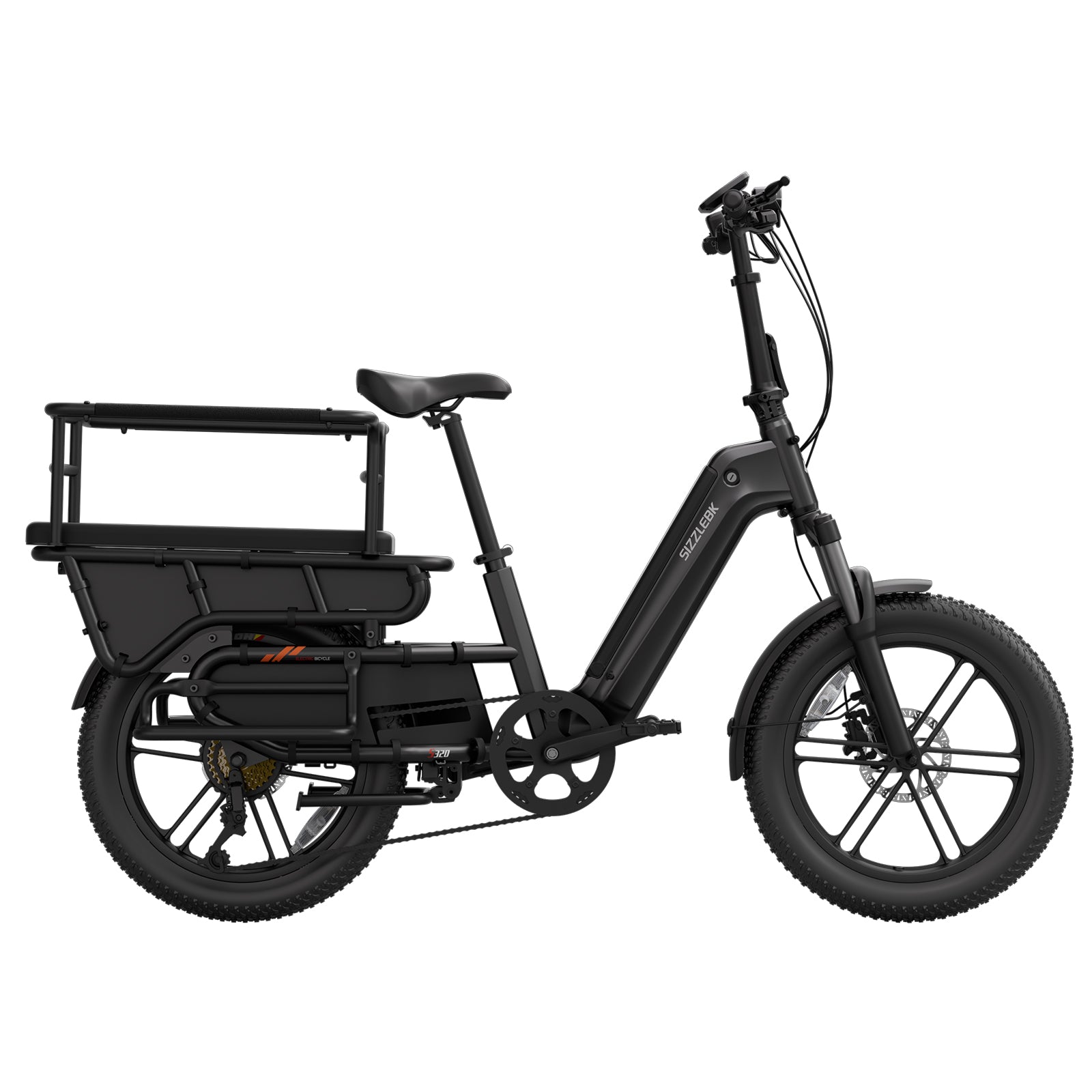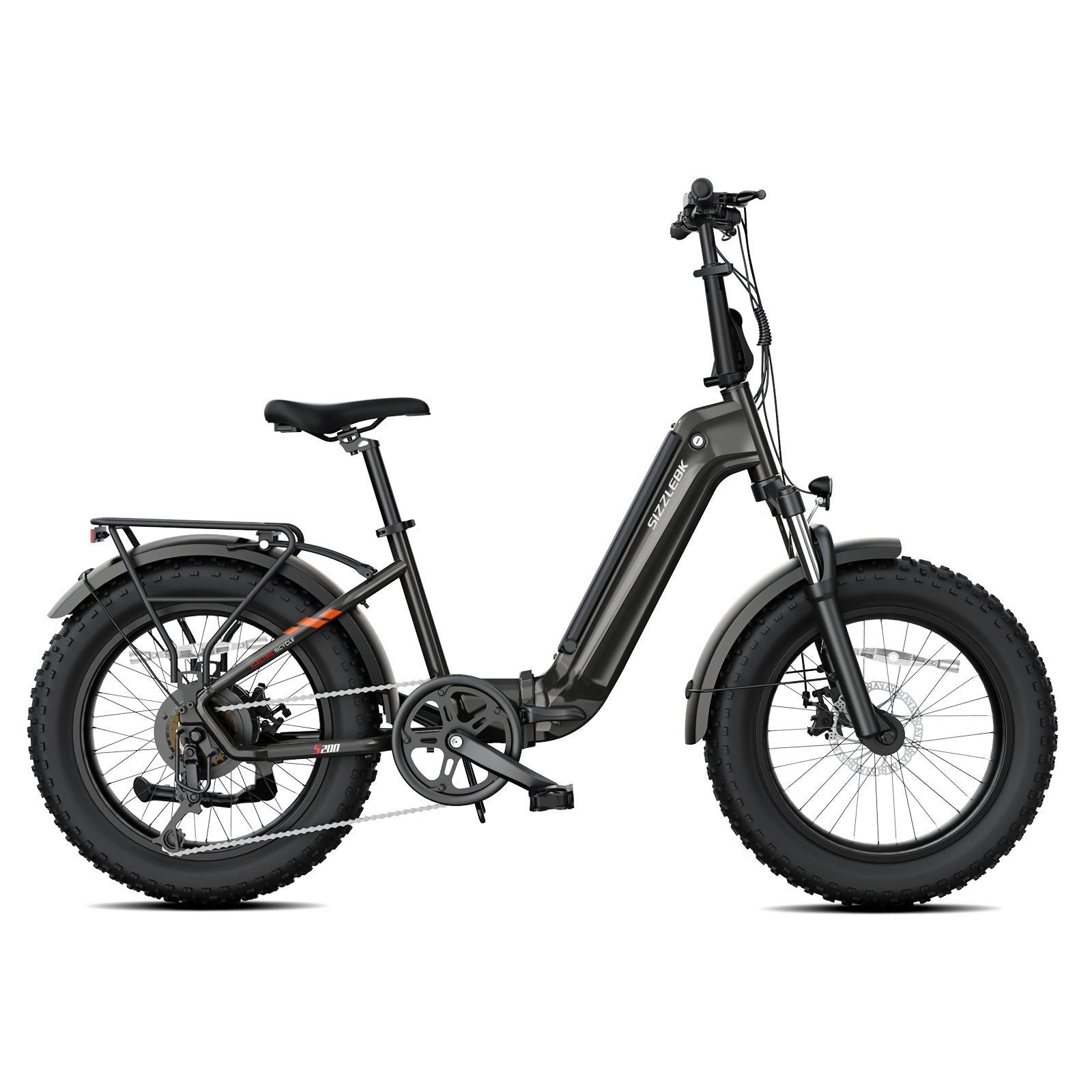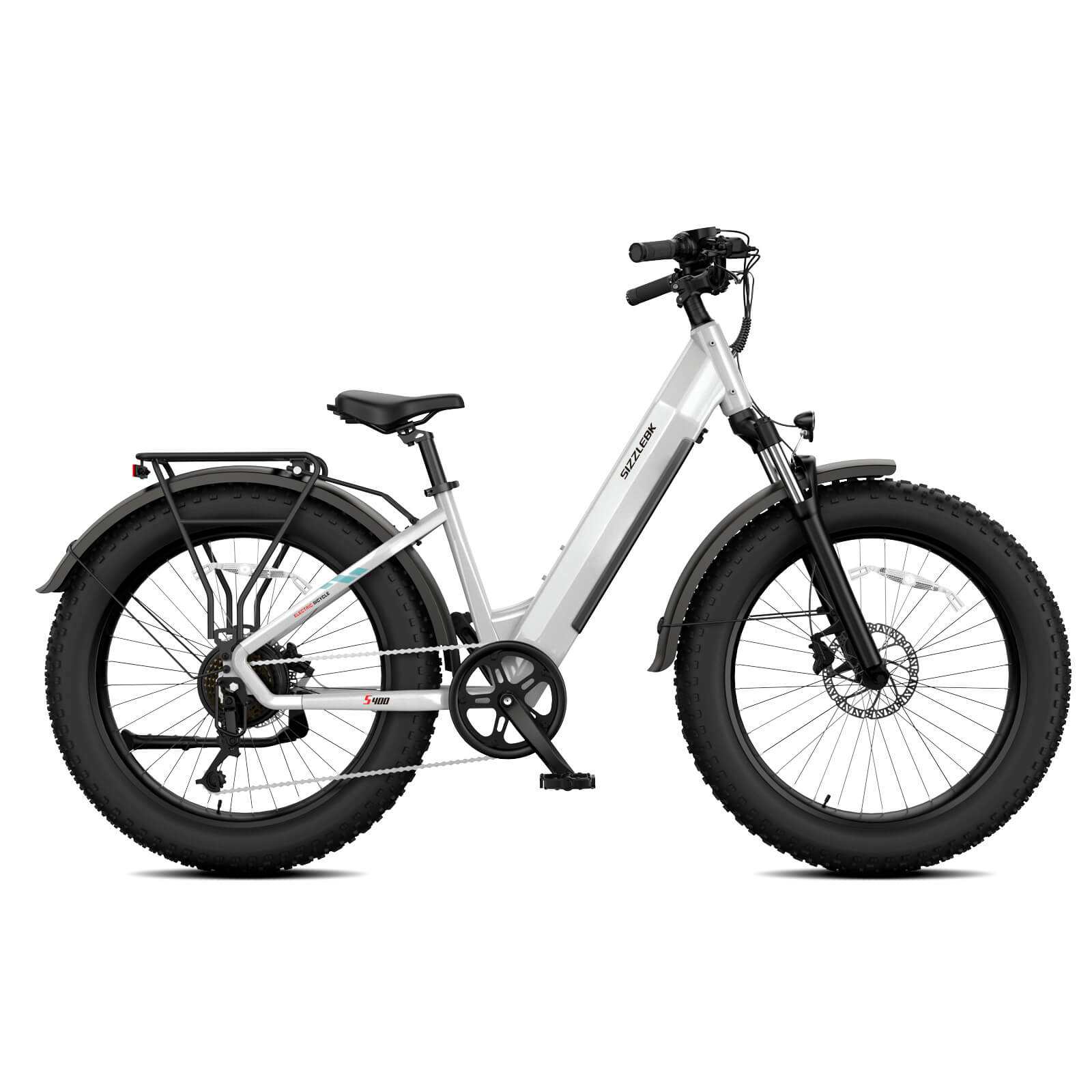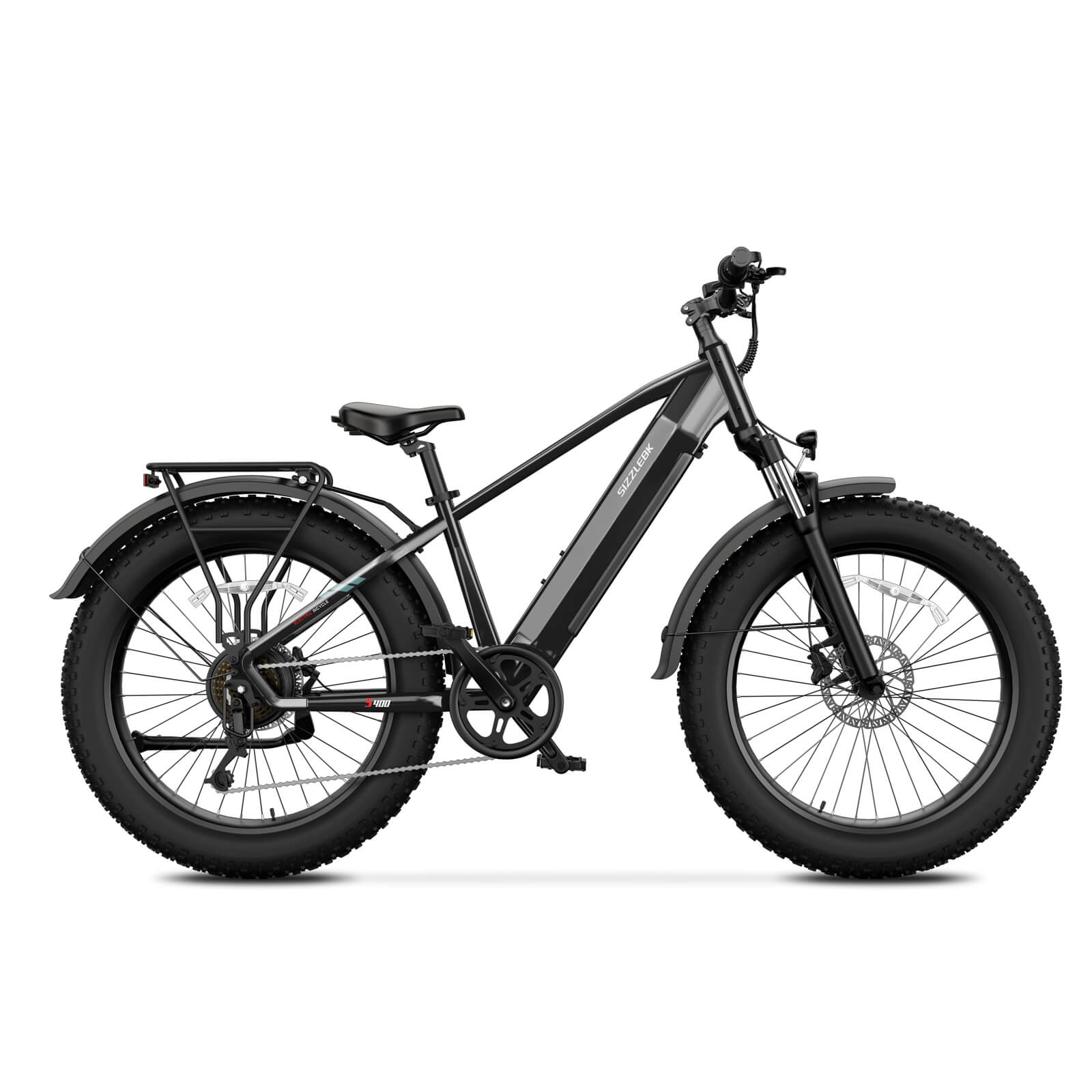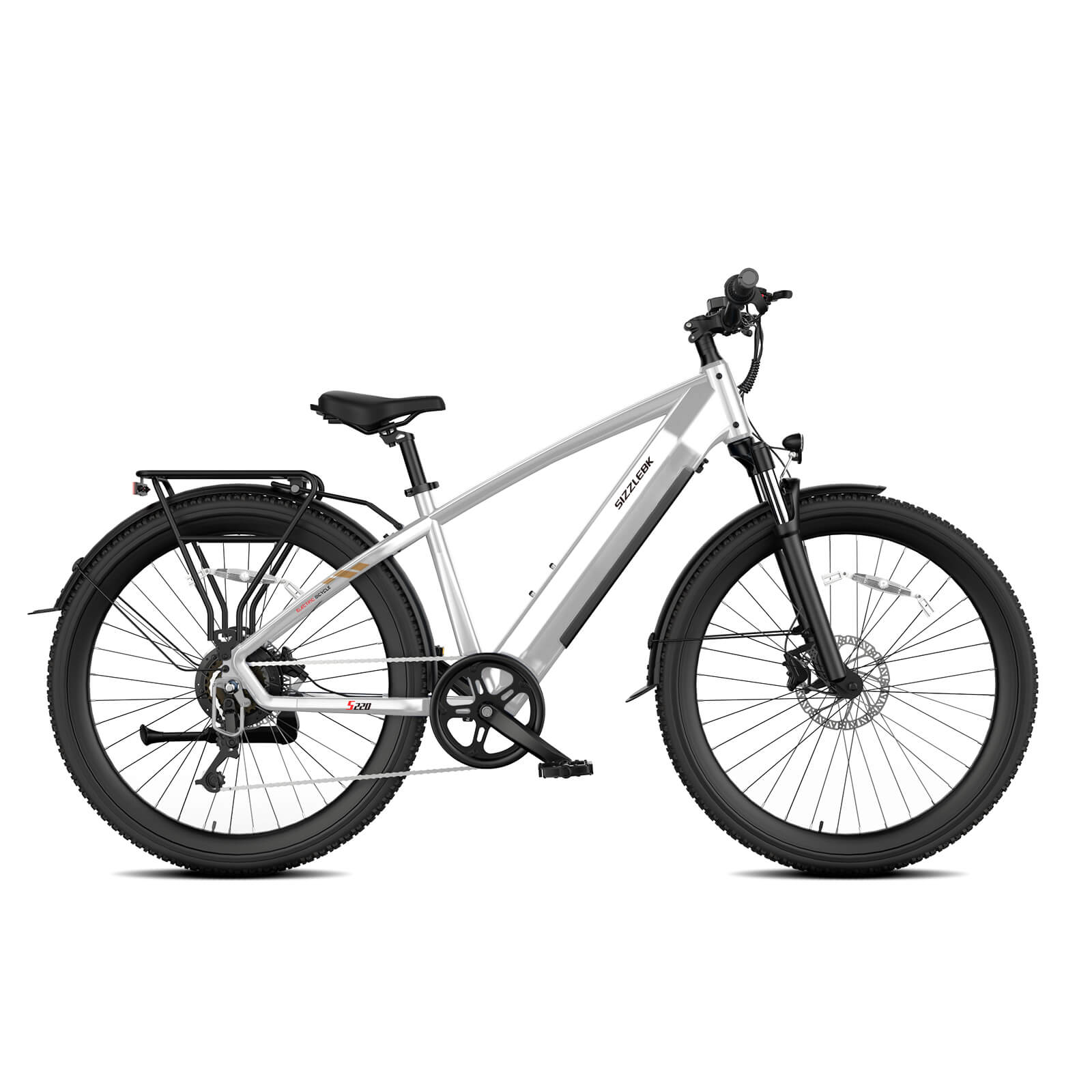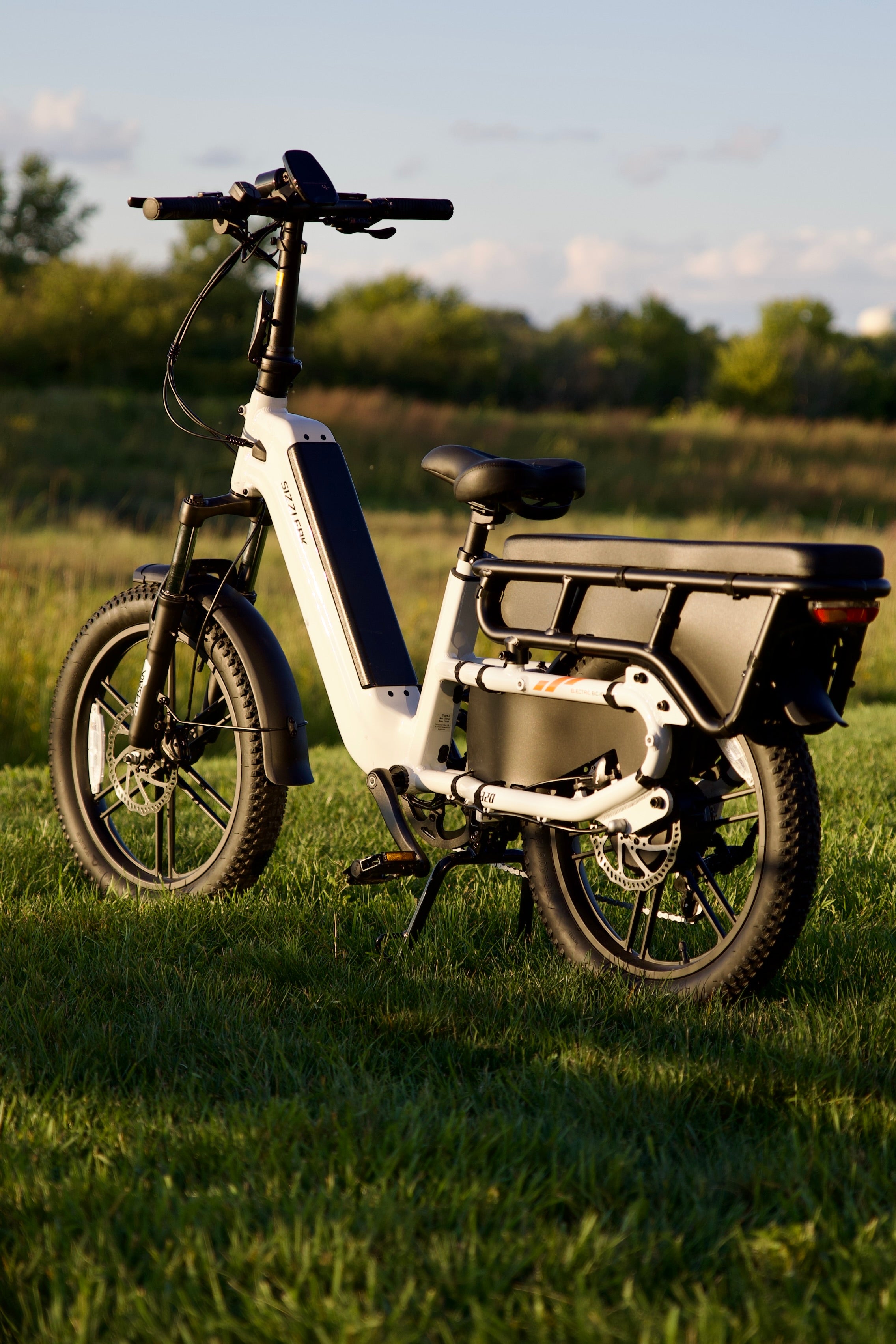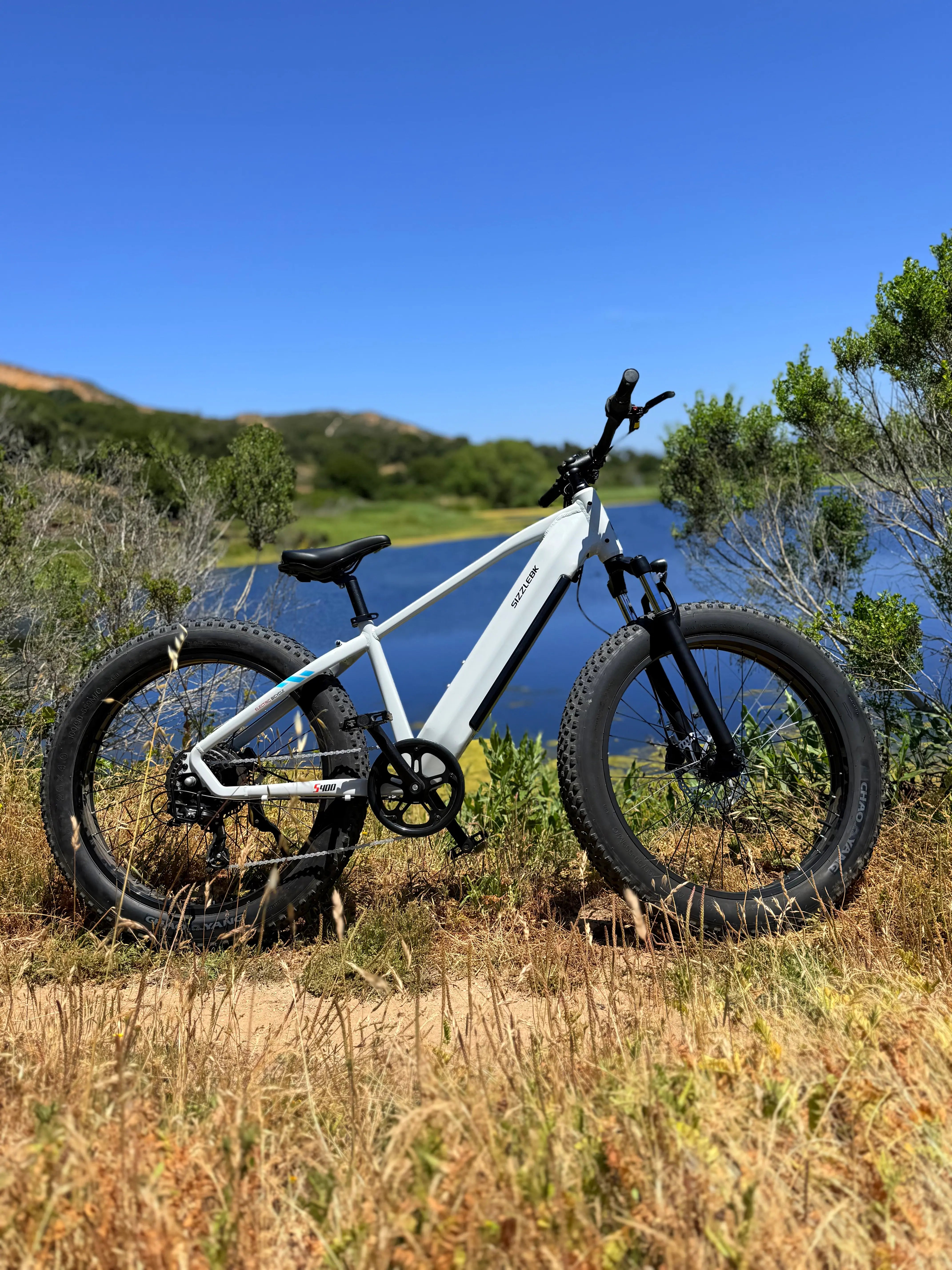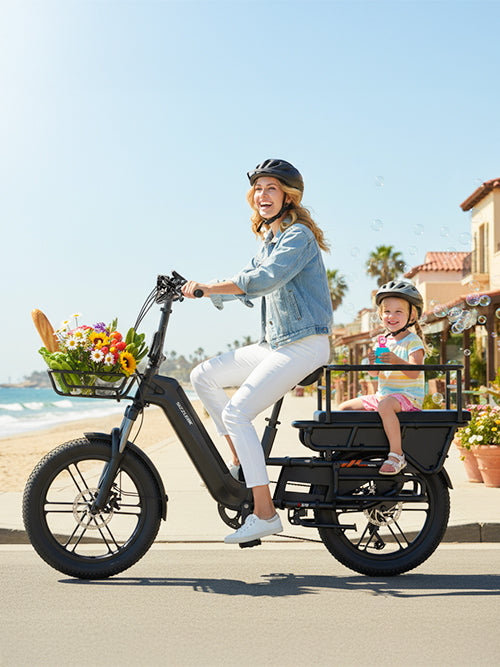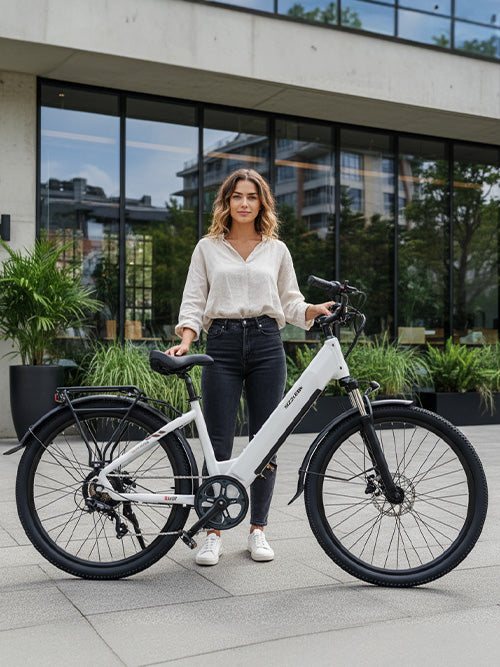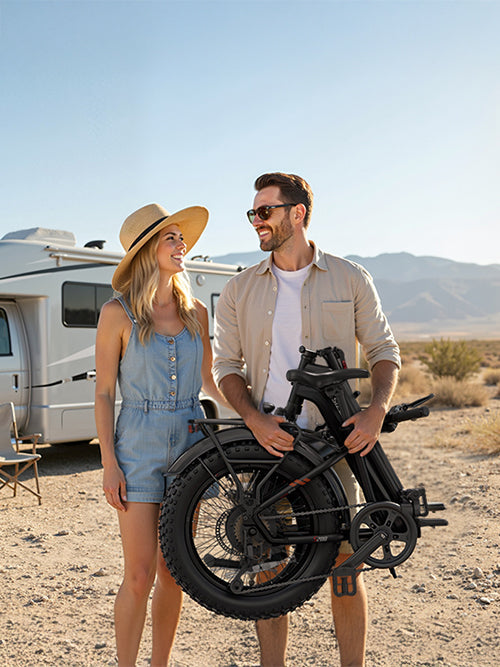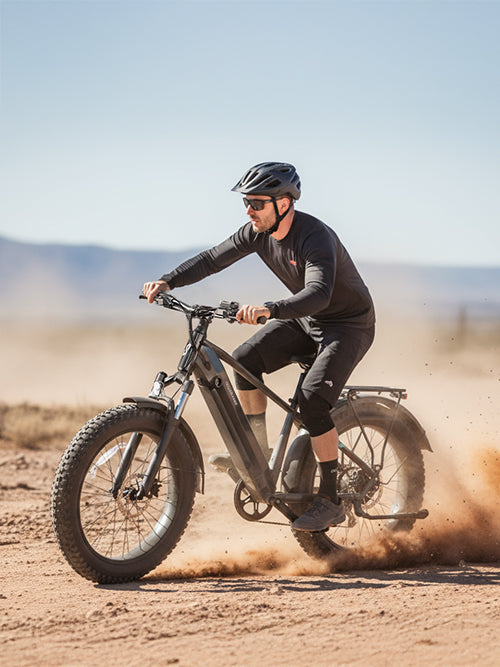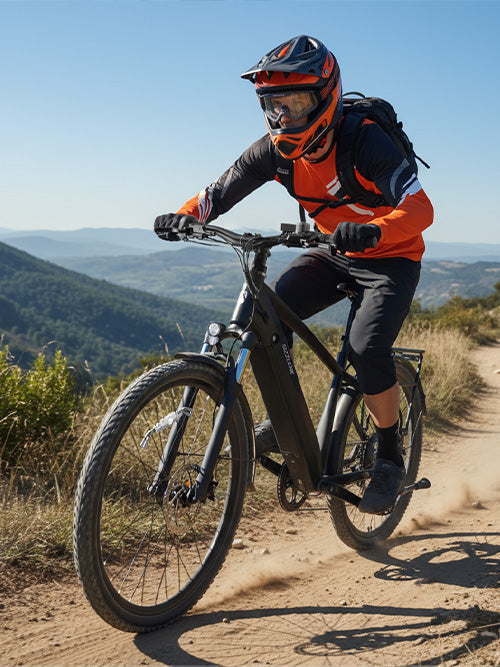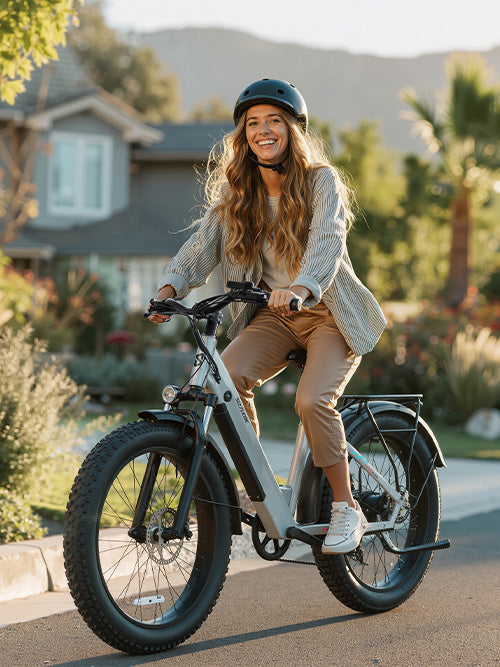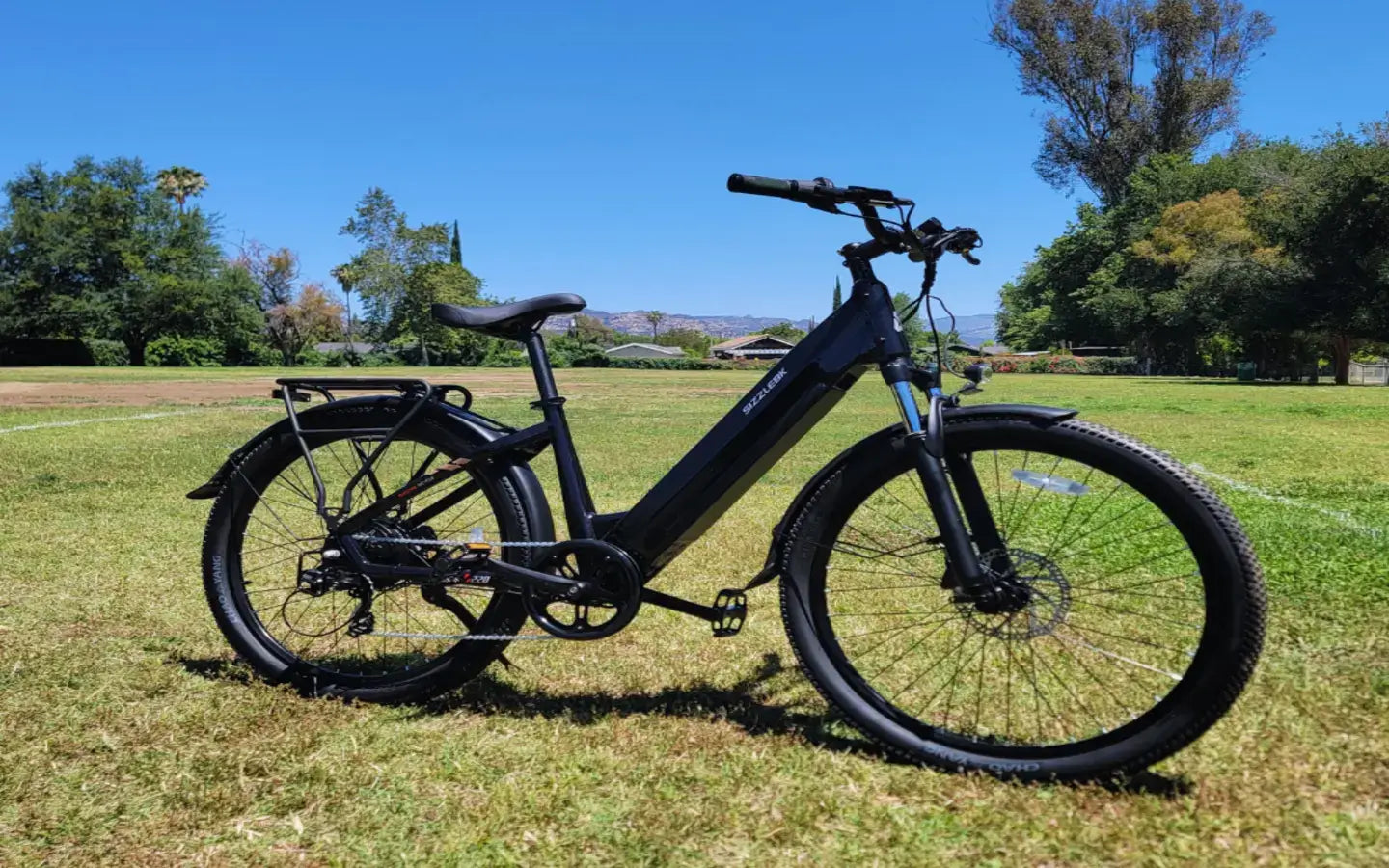Electric cargo bikes have become a popular alternative for those seeking a sustainable, practical, and cost-effective mode of transportation. Whether you're a parent transporting kids, a small business owner making deliveries, or someone aiming to reduce your carbon footprint, choosing the right electric cargo bike can transform your daily routine.
What Is an Electric Cargo Bike?
Unlike traditional bikes or standard e-bikes, electric cargo bikes are engineered with reinforced frames and extended wheelbases to carry heavier and bulkier loads. They feature electric motors that assist with pedaling, enabling riders to transport goods or passengers without excessive effort—even uphill or over long distances.
Types of Electric Cargo Bikes
Understanding the different types of electric cargo bikes will help you identify which model best suits your needs:
| Type | Key Features |
|---|---|
| Longtail Cargo Bikes | Extended rear rack, ideal for carrying kids or cargo; often equipped with bags. |
| Bakfiets (Box Bikes) | Large front box between handlebars and front wheel; great for kids or pets. |
| Midtail Bikes | Shorter wheelbase than longtails, more agile; still carries a decent load. |
| Trikes | Three wheels for maximum stability; suitable for very heavy or bulky loads. |
Key Features to Consider
To choose the most suitable cargo e-bike, assess the following essential components:
1. Motor and Battery
-
Motor Power: Aim for at least 500W if carrying heavier loads or riding uphill.
-
Battery Range: Look for a range of 20–50 miles, depending on your daily usage.
| Motor Type | Best For |
|---|---|
| 500W–750W | Flat urban commutes |
| 750W+ | Hilly terrain, heavy cargo |
2. Load Capacity
-
Consider the weight of what you’ll carry regularly.
-
Some models support up to 400 lbs or more—check specifications closely.
3. Frame Material
| Material | Pros | Cons |
|---|---|---|
| Aluminum | Lightweight, rust-resistant | Less shock-absorbent |
| Steel | Durable, smooth ride | Heavier |
| Carbon Fiber | Very light and strong | Expensive |
4. Wheel Size
-
26”+ wheels: More stable, better over rough terrain.
-
20” wheels: Compact and maneuverable in urban settings.
5. Braking System
-
Prioritize hydraulic disc brakes for responsive, reliable stopping power—especially under load or in rainy conditions.
Comfort and Safety
Ergonomics
-
Choose an upright, adjustable riding position to prevent strain on long rides.
-
Padded saddles and suspension forks can improve comfort.
Built-in Safety Features
-
Look for integrated front and rear lights, reflectors, a bell, and high-visibility materials.
-
Some models also offer wheel guards, step-through frames, and child seat mounts.
Test Ride and Budget Planning
Test Ride
-
Always test ride multiple models before purchase to assess:
-
Handling under load
-
Fit and comfort
-
Ease of operation
-
Budget Considerations
| Budget Range | What You Can Expect |
|---|---|
| $1,500 – $2,500 | Entry-level models with basic features |
| $2,500 – $4,000 | Mid-range bikes with better motors and accessories |
| $4,000+ | Premium models with high-end specs, longer range, and cargo upgrades |
Financing & Incentives
-
Many retailers offer installment payment plans.
-
Check for local or federal e-bike subsidies or green transportation grants.
Final Thoughts
Selecting the right electric cargo bike requires a thoughtful balance of practicality, comfort, and performance. By evaluating your load requirements, riding environment, and daily habits, you can find a model that integrates seamlessly into your lifestyle while reducing environmental impact. Visit local bike shops for hands-on comparisons and expert advice before making your final decision.
Frequently Asked Questions (FAQs)
1. How much cargo weight can an electric cargo bike carry?
Most cargo e-bikes can carry between 250 to 400 lbs. Some heavy-duty models support even more—always verify the manufacturer's specifications.
2. Are electric cargo bikes suitable for hilly areas?
Yes. Opt for a model with at least a 750W motor and a torque sensor to help navigate inclines smoothly.
3. What is the average battery range of a cargo e-bike?
The range typically falls between 20 and 50 miles per charge, depending on load, terrain, and battery capacity.
4. Can I carry children on an electric cargo bike?
Absolutely. Longtail and box-style cargo bikes are designed with child seats or safety harnesses, making them safe for transporting kids.
5. Do I need a special license or insurance to ride a cargo e-bike?
In most regions, no license or insurance is required, but it’s best to check local regulations as laws vary by state or country.
